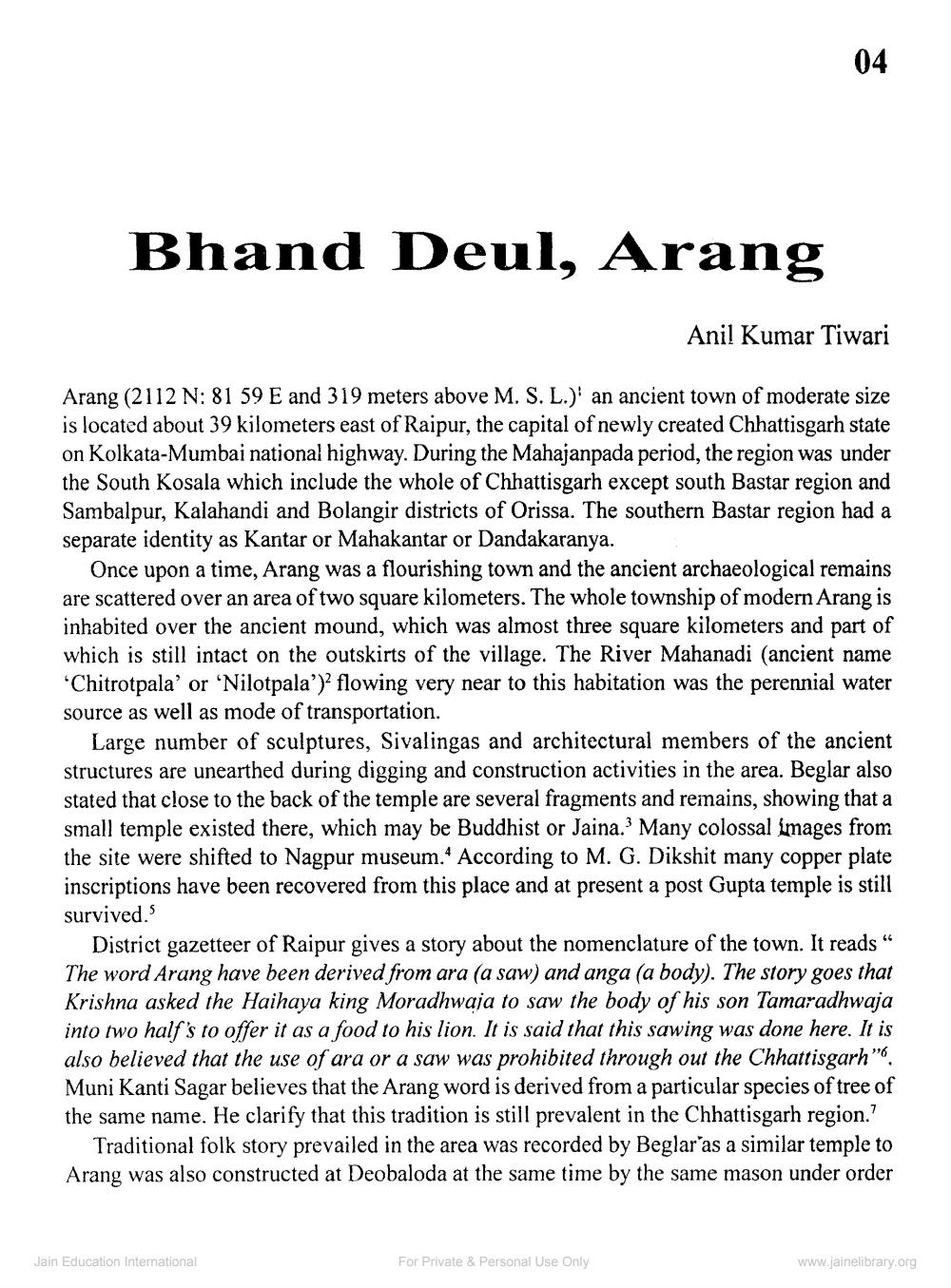________________
Bhand Deul, Arang
04
Arang (2112 N: 81 59 E and 319 meters above M. S. L.) an ancient town of moderate size is located about 39 kilometers east of Raipur, the capital of newly created Chhattisgarh state on Kolkata-Mumbai national highway. During the Mahajanpada period, the region was under the South Kosala which include the whole of Chhattisgarh except south Bastar region and Sambalpur, Kalahandi and Bolangir districts of Orissa. The southern Bastar region had a separate identity as Kantar or Mahakantar or Dandakaranya.
Anil Kumar Tiwari
Once upon a time, Arang was a flourishing town and the ancient archaeological remains are scattered over an area of two square kilometers. The whole township of modern Arang is inhabited over the ancient mound, which was almost three square kilometers and part of which is still intact on the outskirts of the village. The River Mahanadi (ancient name 'Chitrotpala' or 'Nilotpala')' flowing very near to this habitation was the perennial water source as well as mode of transportation.
Large number of sculptures, Sivalingas and architectural members of the ancient structures are unearthed during digging and construction activities in the area. Beglar also stated that close to the back of the temple are several fragments and remains, showing that a small temple existed there, which may be Buddhist or Jaina.3 Many colossal images from the site were shifted to Nagpur museum. According to M. G. Dikshit many copper plate inscriptions have been recovered from this place and at present a post Gupta temple is still survived."
District gazetteer of Raipur gives a story about the nomenclature of the town. It reads " The word Arang have been derived from ara (a saw) and anga (a body). The story goes that Krishna asked the Haihaya king Moradhwaja to saw the body of his son Tamaradhwaja into two half's to offer it as a food to his lion. It is said that this sawing was done here. It is also believed that the use of ara or a saw was prohibited through out the Chhattisgarh" Muni Kanti Sagar believes that the Arang word is derived from a particular species of tree of the same name. He clarify that this tradition is still prevalent in the Chhattisgarh region.'
"36
Jain Education International
Traditional folk story prevailed in the area was recorded by Beglar as a similar temple to Arang was also constructed at Deobaloda at the same time by the same mason under order
For Private & Personal Use Only
www.jainelibrary.org




